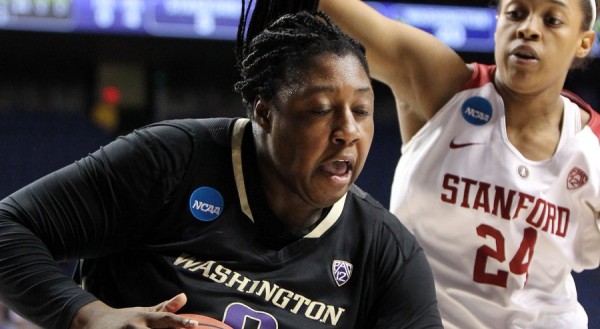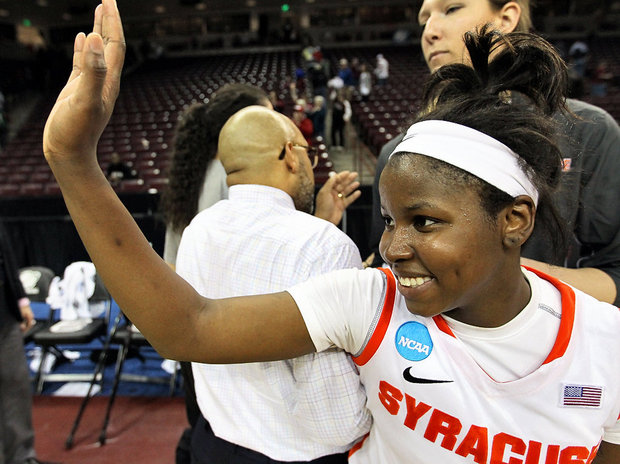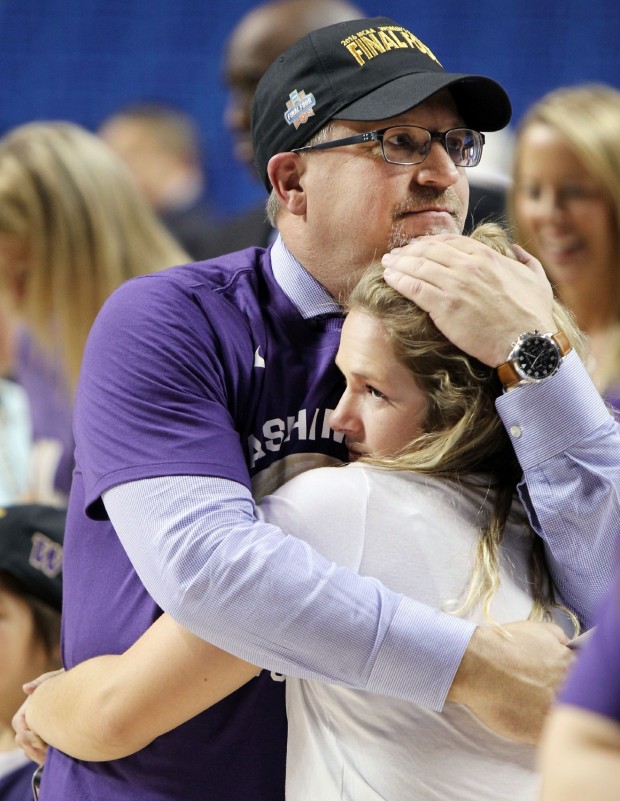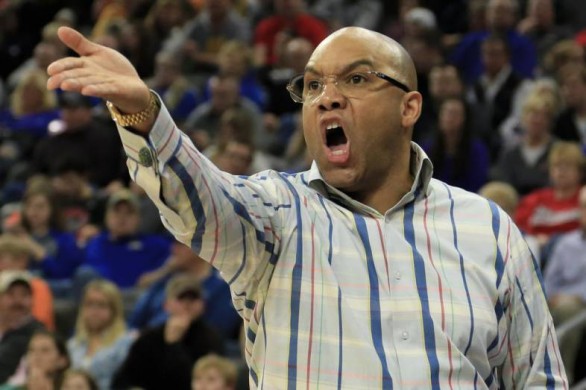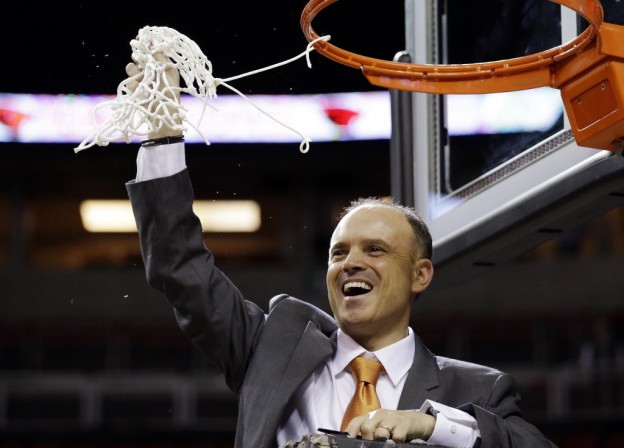Women’s college basketball will always have a relatively difficult time piercing the national sports news cycle during the men’s NCAA tournament.
That’s not a criticism, that’s reality. For one thing, the first night of the women’s Sweet 16 is held on the second night of the men’s Sweet 16. The scheduling change for the women was difficult, but on balance, it’s hard to deny that it’s good for on-site fans, with or without a long-distance commute.
The women’s Sweet 16 and Elite Eight used to run Saturday through Tuesday. A Friday-Monday rotation is much better for anyone who wants to see the best of women’s basketball in person. The schedule adjustment also carries the added benefit of putting Saturday’s Sweet 16 games and Sunday’s Elite Eight games out of the way of the men’s tournament. On balance, this schedule adjustment works.
Yet, we all know which NCAA tournament still drives the news cycle, and will continue to do so for a long time.
Women’s college basketball might not face a problem — niche sports should never be expected to pull in huge ratings — but it certainly faces various challenges. Of these challenges, none might be bigger than entrenched public perception.
The beauty of this past weekend in the women’s NCAA tournament is that it smashed many (though not all) of those perceptions to itsy bitsy pieces.
Just look at these names and faces:

Oregon State’s Ruth Hamblin high fives fans after Oregon State defeated CSU Bakersfield 75-51 in an NCAA college basketball game, in Corvallis, Ore., on Tuesday, Dec. 15, 2015. (AP Photo/Timothy J. Gonzalez)
These three players — stars for their teams over the weekend in the women’s NCAA tournament — have led their schools to the Final Four for the first time.
That’s right — while Connecticut and Geno Auriemma make their ninth straight Final Four, closing in on a fourth straight championship which would very legitimately make Breanna Stewart the best women’s college basketball player of all time, the other three programs in the Final Four will all make their debut. None of them are No. 1 seeds. All of them beat established brand-name programs in the Elite Eight to cross the threshold.
Very swiftly, a lot — not all, but a lot — of the complaints about women’s college basketball have been swatted away, Ruth Hamblin-style.
For some, it will always be the case that women’s basketball just isn’t as interesting as the men’s game because it’s not an above-the-rim game. That point simply can’t be discussed here. We’ll move on.
However, other longstanding complaints about women’s college hoops are as follows: The same teams win all the time. The same faces are always there. There’s not enough parity, enough upsets and unpredictability. You always get a 1-versus-2 regional final. The same coaches are always there on Final Four weekend.
There are other complaints in the mix, but those represent a reasonable percentage of the public’s discontent with women’s college basketball.
This past weekend obliterated every last one of those notions, which used to either be true or — at the very least — were rooted in truths connected to years of NCAA tournament results.
Notre Dame and South Carolina were 64-2 entering the Sweet 16. They met in last year’s Final Four and were steaming toward another Final Four. Notre Dame was the heavy favorite to make a sixth consecutive Final Four under Muffet McGraw.
Instead, the Irish and Gamecocks were both stunned in the Sweet 16. Abruptly, the typical procession of top seeds to the Final Four ended. However, from that chaos, a measure of predictability still remained in the equation.
Stanford had upset Notre Dame, while Tennessee did not beat South Carolina. (Syracuse did.) Nevertheless, the Cardinal and the Lady Vols both arrived in the Elite Eight, carrying the banner for the establishment — the old-money crowd — in women’s basketball. Over in Dallas, top-seeded Baylor moved to the Elite Eight against second-seeded Oregon State.
The 2016 Women’s Final Four was all set to be a collection of royalty, with newcomers locked outside the castle: UConn. Tennessee. Stanford. Baylor. Even though Tennessee was a 7 seed and Stanford a 4, that Final Four — just as much as a UConn-Notre Dame-South Carolina-Baylor Final Four — would have reinforced a lot of the longstanding perceptions about women’s college basketball.
The same teams. The same coaches. The same faces.
Where’s the new blood? Where are the breakthroughs for other programs (South Carolina being something of an exception)?
We got your breakthroughs RIGHT HERE.
The Syracuse men might have done the improbable over the weekend, but the women’s team made its first Final Four by thumping Tennessee, 89-67. Alexis Peterson scored a season-high 29 points — after scoring 26 in the Friday upset of South Carolina — to carry the Cuse to the promised land.
Washington — for so long a program which, like much of the rest of the Pac-12, lived in Stanford’s large shadow — emerged from that obscure place to solidly outplay the Cardinal and book their flight to a first Final Four. Chantel Osahor, whose playing style is unlike any other player you’ve ever seen, outplayed Stanford’s Erica McCall in the game’s showcase confrontation. Osahor played a virtually perfect game: In 39 minutes, she scored 24 points on 8-of-11 shooting, pulled down 18 boards, and committed no turnovers. She and teammate Kelsey Plum (shown in the cover photo for this story) will get their moment on the big stage; Washington or Syracuse will play for the national championship next Tuesday night.
Those were the two Sunday winners in the Elite Eight.
Monday night, this man guided his school to a first Final Four:
The Oregon State program was a total disaster when Scott Rueck took over… and this had very little to do with wins and losses. Rueck didn’t just have to coach better. He had to repair a lot of damage, mend relationships, assuage fears… and then recruit and coach his tail off.
Here he is, in his and Oregon State’s first Final Four after the Beavers went into the heart of Texas and knocked off a Baylor team making its sixth Elite Eight appearance in the last seven seasons.
Just stop for a moment and consider what Rueck, Syracuse coach Quentin Hillsman, and Washington coach Mike Neighbors achieved by joining Geno Auriemma at the Final Four:
The Baylor-Tennessee-Stanford trio those three coaches just defeated had made 33 Final Four appearances over time. The Bears, Vols and Cardinal had made a combined 16 Elite Eight appearances out of a possible 21 over the past seven seasons, including this one. Even with Notre Dame and South Carolina sitting home, it remained easy to think that Old Money would still carry the day in women’s college hoops.
Not one, not two, but all three of the fresh faces were good enough to stand athwart history and yell, “STOP!”
Three No. 1 seeds are not at the Final Four.
Three Old Money programs — Stanford, Tennessee, and Baylor — are not at the Final Four.
Yes, UConn is there — in the Huskies’ four NCAA tournament games, one can say that nothing has changed in women’s college basketball.
However, 60 NCAA tournament games have been played to this point. The other 56 non-UConn games have upended everything you (might have) thought you knew about the sport.
No, this doesn’t mean that women’s college basketball is instantly healed or cured of its deficiencies. It doesn’t mean we’re in an era when No. 1 seeds will regularly fail to make the Final Four. It doesn’t mean that past complaints about the sport didn’t have merit or some basis in accuracy.
It does mean, however, that sports can and do evolve. They can change and give us unpredictability. They can be something other than a foregone conclusion.
Most of all, the emergence of three first-time Final Four schools — denying Old Money another trip to the final weekend of the season — underscores something very simple:
UConn and Geno — by avoiding the upset bug yet again, while the other top-tier programs fall victim to it — just might be an exceptional program as opposed to a representative one.
Instead of viewing UConn as emblematic of everything that’s wrong with women’s college basketball, maybe we can more easily appreciate that these are the John Wooden UCLA Bruins of women’s hoops.
The excellence of Lew Alcindor and Bill Walton wasn’t boring — college basketball wouldn’t have grown during that era if the public had been turned off by that run.
If you’re turned off by UConn and its annual denial of unpredictability, no one can stop you from feeling that way. Just know that in the other 99 percent of women’s college basketball, unpredictability reigns.
If a sport is going to be judged, women’s college basketball has refuted so many of the longstanding judgments which have been held against the sport for a very long time.
Washington, Syracuse, and Oregon State have hopefully made it easier to give women’s college basketball a fresh re-examination… and a new chance as a TV sport… in the coming years.


